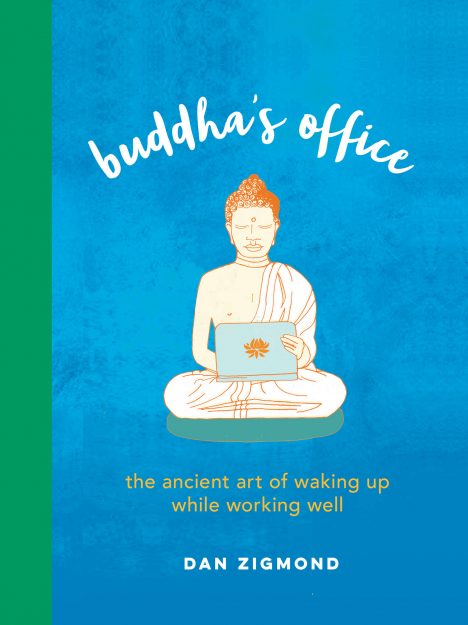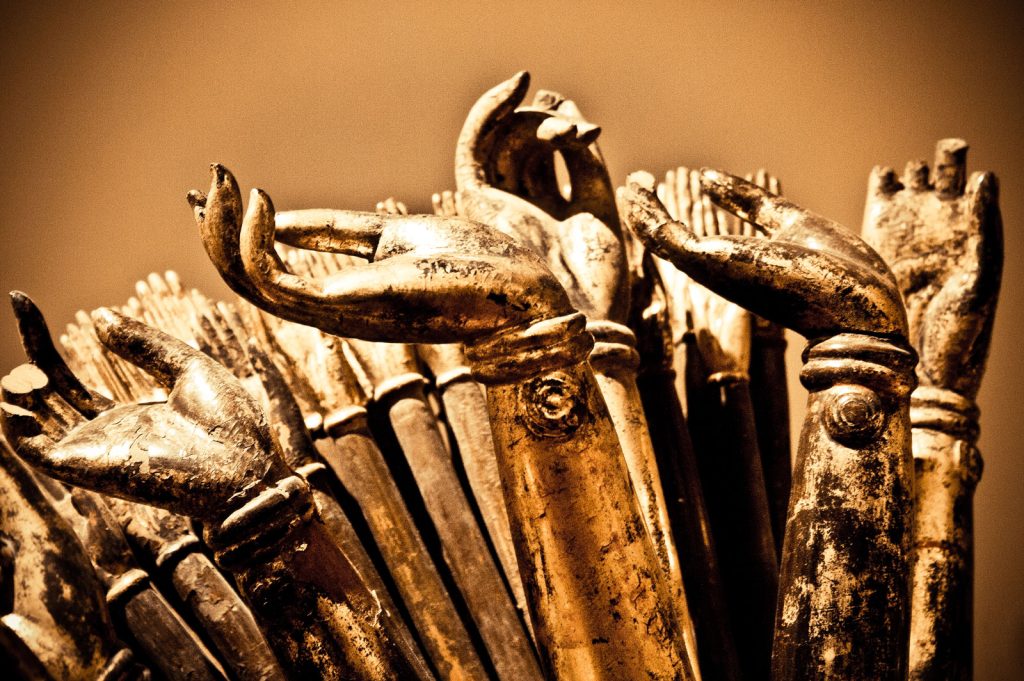The world is a distracting place. And while it has certainly become more and more distracting in many ways, this is not a new problem by any means. As the futurist and best-selling author Alex Pang writes in his masterful book The Distraction Addiction, “Humans have always had to deal with distraction and lack of focus—and for thousands of years, they have been cultivating techniques that effectively address them.”
Let me confess something at the outset: I am very easily distracted. If I sit at a restaurant with a television, I can’t help watching it. If I hear someone talking at the next table, I lose track of my own conversation. If I pick up my phone to check the time, I might not put it down for 10 minutes.
In other words, focus does not come easily to me. I have to work at it. Years ago, I used to take my laptop with me to meetings, thinking I was being efficient by checking email during the slow parts. Then I realized I was paying no attention to the people around me, sometimes forgetting to get up when the meeting was over. Now I leave my computer at my desk—and try to keep my phone in my pocket.
Smartphones are, of course, a huge source of distraction. Studies find that their use “increases reaction time, reduces focus, and lowers performance” of anything requiring concentration. This is why, by one estimate, smartphone distraction now contributes to almost a quarter of all traffic accidents.
The problem is that we are far, far worse at multitasking than we think. No matter what we tell ourselves, “Only a limited amount of information can be attended to at any given moment.” We may think we’re expertly juggling half a dozen tasks at once, but we’re really just switching between them very inefficiently, repeatedly disrupting our concentration.
Buddha placed great value on concentration, and much of his teaching on meditation describes how to get into the deeper and deeper states of concentration that he called “absorptions.” But you don’t have to be an experienced contemplative or yogi to understand the value. We’ve all had the experience of being fully absorbed in some activity. In popular psychology, this total absorption is usually called “flow,” and can be defined as that “subjective state that people report when they are completely involved in something to the point of forgetting time, fatigue, and everything else but the activity itself.” It can be an exhilarating experience—as well as an extremely productive one. But it is very fragile.
Distraction is the enemy of flow. The mere ringing of a cell phone—not yours, but someone else’s—is sufficient to measurably disrupt concentration. In one study, classroom students whose lecture was interrupted by a ringing phone performed worse on a pop quiz than those listening to the same lecture without interruption.
Multitasking is essentially a form of intentional distraction. Switching between multiple tasks disrupts our working memory, an effect that only gets worse as we get older. In one study in Canada, students who used a laptop during a lecture scored lower on a later test—perhaps not a huge surprise. But even those students without a laptop who just sat near the ones on their screens were so distracted that they scored 17 percent lower, too. As the great Indian Buddhist monk Santideva put it, a distracted mind “is not fit for any work.”
So what do we do about all these distractions? Meditation helps. People tend to think of the goal of meditation as clearing your mind and calming down, but that’s not the whole story. Meditation is really about what happens when we stop meditating. A big part of why we practice mindfulness in a quiet room away from distractions is so we can draw on that skill when we’re in a noisy office surrounded by chattering coworkers. Bringing our full attention to focus on our breath in meditation strengthens our ability to concentrate in daily life, in the same way that lifting weights in the gym strengthens our muscles and allows us to lift heavy things elsewhere.
You can also make things easier on yourself by cutting down on unnecessary distractions whenever possible. Put down your phone—preferably in a place where you can’t see it. Schedule your time checking email or Twitter so you’re not clicking over there constantly. Close unnecessary windows on your computer. Go fully offline even. There are apps that will track your online time and even kick you off the local network during certain hours—try those if you need to. Maybe get away from your desk if people are prone to interrupt you there. Give yourself permission to spend extended time—an hour or more—disconnected and focused on a specific task.
Those who work at home face special challenges of distraction because your whole life is surrounding you as you try to work. If you can, create a space that is just for working—even if you have to set it up and take it down each day. If you’re working at the kitchen table, only work there—sit somewhere else to have lunch so that you’re not tempted to work and eat at the same time. (More on that in the next chapter!) Try to keep your work tasks and home tasks separate, and schedule time for each. When it’s time to start work, stop doing the dishes or straightening up the living room, just as you would if you had to rush out the door. If you have others at home while you’re working, especially kids, it’s even more important to try to create some separate space for yourself—and, of course, even more difficult. Be honest with yourself about what you can accomplish, and don’t torture yourself by trying to do many things at once when your home life demands your attention.
There is such a thing as good multitasking. Because we can’t shut our ears the way we can shut our eyes, our brains seem to have evolved to deal with noise distractions differently than visual distraction. That’s why many people actually find it easier to work with music playing, for example. (My daughter used to claim she could study better with the TV on in the background, but she would really only listen to it, not watch it.) I myself can’t seem to work with headphones, but many of my colleagues swear by them and wear them to listen to music much of the day. I often like to have conversations with colleagues while walking, which I find allows me to concentrate better on what they are saying than if we were just sitting alone in a room. To quote Alex Pang once more, “These kinds of multitasking encourage flow,” rather than disrupt it.
In the end, you have to find patterns that work for you. When I’m writing, I like to have all my books scattered around me, an arrangement that looks chaotic and distracting to many people. (I have six books opened within arm’s reach right now.) That’s how I concentrate best. I prefer working in silence for most tasks, but I love music or a good podcast while I’m doing the dishes or driving. In meetings, I try as hard as I can not to pick up my phone—because I know that, once I start checking it, my concentration is shot.
Your patterns of concentration will be different. Learn them. Pay attention to your attention—when you have it and when you don’t. Notice the things that encourage and disrupt your flow throughout the day. Try not to switch repeatedly between tasks.
The modern Zen master Shunryu Suzuki once said to his American students, “You have a saying, ‘to kill two birds with one stone,’ but our way is to kill just one bird with one stone.” I don’t want you to kill any birds, but I think you’ll find yourself much more productive if you focus on one stone at a time.
♦

Excerpted from Buddha’s Office: The Ancient Art of Waking Up While Working Well by Dan Zigmond. Copyright © 2019. Available from Running Press, an imprint of Hachette Book Group, Inc.
Further reading: Did you enjoy this article? You might also like our guide to ten mindful ways to use social media, scholar-practitioner Andrew Olendzki’s essay on the mental peace beyond multitasking, or this interview with Buddha’s Office author Dan Zigmond.
Thank you for subscribing to Tricycle! As a nonprofit, we depend on readers like you to keep Buddhist teachings and practices widely available.
